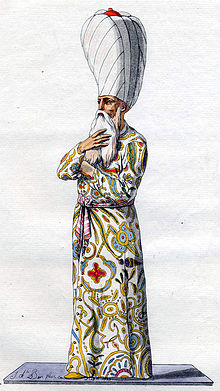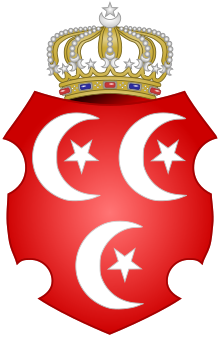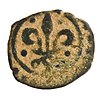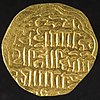Sultan of Egypt

Sultan of Egypt was the status held by the rulers of
Ayyubid dynasty
Prior to the rise of
Mamluk dynasties
In 1250, the Ayyubids were overthrown by the
Ottoman Sultanate and autonomous Khedivate

The Ottoman conquest of Egypt in 1517 ended the Egyptian Sultanate, with Egypt henceforth a province of the
In 1523, the Ottoman-appointed Turkish
Following the defeat of

Muhammad Ali's grandson, Ismail I, acceded to the Egyptian throne in 1863 and immediately set about achieving his grandfather's aims, though in a less confrontation manner. A combination of growing Egyptian power, deteriorating Ottoman strength, and outright bribery led to Ottoman Sultan
Restoration of Egyptian Sultanate
From 1882 onwards, Egypt's status became deeply convoluted: officially a province of the Ottoman Empire, semi-officially a virtually independent state with its own monarchy, armed forces, and territorial possessions in
Rising nationalist anger at the continued British occupation forced Britain to formally recognize Egyptian independence, in 1922. However, the title of Sultan was dropped and replaced with King. Nationalist leader
Upon overthrowing Fuad's son,
List of Sultans
Ayyubid Dynasty
- Saladin (1171–1193)
- Al-Aziz (1193–1198)
- Al-Mansur (1198–1200)
- Al-Adil I (1200–1218)
- Al-Kamil (1218–1238)
- Al-Adil II (1238–1240)
- As-Salih Ayyub (1240–1249)
- Turanshah (1249–1250)
- Shajar al-Durr (1250–1250)
- Al-Ashraf II (1250–1254) (nominally, actually the Mamluk Aybak ruled)
Bahri Dynasty
|
Salihi Mamluks
| ||||||||||
|---|---|---|---|---|---|---|---|---|---|---|
| Number | Royal title | Name | Reign start | Reign end | Ethnicity | Background notes | Coinage | |||
| 1st | Al-Malik al-Mu'izz | Izz ad-Din Aybak | 31 July 1250[1] | 10 April 1257[2] | Turkmen | Middle-ranking mamluk of Ayyubid sultan as-Salih Ayyub. Married the latter's widow, Shajar ad-Durr, who became sultan on 2 May 1250 until she abdicated in favor of Aybak.[1] | 
| |||
| 2nd | Al-Malik al-Mansur | Nur ad-Din Ali | 15 April 1257[3] | November 1259[3] | Turkmen | Son of Aybak. | 
| |||
| 3rd | Al-Malik al-Muzaffar | Sayf ad-Din Qutuz | November 1259[3] | 24 October 1260[3] | Khwarazmian Turk[4]
|
A mamluk of Aybak and head of Aybak's mamluk faction, the Mu'izziya,[5] Aybak's chief deputy, and strongman of Ali's sultanate.[6] | 
| |||
| 4th | Al-Malik az-Zahir | Rukn ad-Din Baybars
|
24 October 1260[3] | 1 July 1277[3] | Kipchak Turk | Bahri mamluk and founder of the Bahri dynasty.[5]
|

| |||
| 5th | Al-Malik as-Sa'id | Nasir ad-Din Barakah | 3 July 1277[3] | August 1279[3] | Kipchak Turk | Son of Baybars and his wife, who was the daughter of Husam ad-Din Baraka Khan, a Khwarazmian warrior chief, after whom Barakah was named.[7][4][8] | 
| |||
| 6th | Al-Malik al-Adil | Badr ad-Din Salamish | August 1279[3] | November 1279[3] | Kipchak Turk | Son of Baybars. | ||||
| 7th | Al-Malik al-Mansur | Sayf ad-Din Qalawun | November 1279[3] | 10 November 1290[3] | Kipchak Turk[9]: 394 | Bahri mamluk and Baybars' chief deputy | 
| |||
| 8th | Al-Malik al-Ashraf | Salah ad-Din Khalil | 12 November 1290[3] | 12 December 1293[3] | Kipchak Turk | Son of Qalawun. | 
| |||
| 9th | Al-Malik an-Nasir | Nasir ad-Din Muhammad
|
14 December 1293[3] | December 1294[3] | Kipchak Turk | Son of Qalawun. First reign. | 
| |||
| 10th | Al-Malik al-Adil | Zayn ad-Din Kitbugha | December 1294[3] | 7 December 1296[3] | Mongol[10] | A mamluk of Qalawun.[10] | 
| |||
| 11th | Al-Malik al-Mansur | Husam ad-Din Lajin | 7 December 1296[3] | 16 January 1299[3] | Circassian[11] | A mamluk of Qalawun.[10] Relative to Rukn ad-Din Baybars al-Jashnakir[11] | 
| |||
| 12th | Al-Malik an-Nasir | Nasir ad-Din Muhammad | 16 January 1299[3] | March 1309[3] | Kipchak Turk | Second reign. | 
| |||
| 13th | Al-Malik al-Muzaffar | Rukn ad-Din Baybars al-Jashnakir
|
April 1309[3] | 5 March 1310[3] | Circassian[11] | A mamluk of Qalawun.[12] Relative to Husam ad-Din Lajin[11] | ||||
| 14th | Al-Malik an-Nasir | Nasir ad-Din Muhammad | 5 March 1310[3] | 6 June 1341[3] | Kipchak Turk | Third reign. | 
| |||
| 15th | Al-Malik al-Mansur | Sayf ad-Din Abu Bakr
|
8 June 1341[3] | August 1341[13] | Kipchak Turk | Son of an-Nasir Muhammad and his concubine Narjis.[14] Real power in Abu Bakr's sultanate was held by Qawsun, a mamluk and senior emir of an-Nasir Muhammad.[13] | ||||
| 16th | Al-Malik al-Ashraf | Ala'a ad-Din Kujuk
|
August 1341[15] | 21 January 1342[16] | Kipchak Turk and Tatar | Son of an-Nasir Muhammad and his Tatar concubine Ardu.[14] An infant when he was made sultan by strongman Qawsun.[13] | ||||
| 17th | Al-Malik an-Nasir | Shihab ad-Din Ahmad
|
21 January 1342[16] | 27 June 1342[17] | Kipchak Turk | Son of an-Nasir Muhammad and his concubine Bayad, a freed slave girl.[14] | ||||
| 18th | Al-Malik as-Salih | Imad ad-Din Abu'l Fida Isma'il
|
27 June 1342[16] | 3 August 1345[18] | Kipchak Turk | Son of an-Nasir Muhammad and one of his concubines, unnamed by the sources.[14] | ||||
| 19th | Al-Malik al-Kamil | Sayf ad-Din Sha'ban | 3 August 1345[18] | 18 September 1346[18] | Kipchak Turk | Son of an-Nasir Muhammad and one of his concubines, unnamed by the sources (same mother of as-Salih Isma'il).[14] | ||||
| 20th | Al-Malik al-Muzaffar | Sayf ad-Din Hajji | 18 September 1346[18] | 10 December 1347[18] | Kipchak Turk | Son of an-Nasir Muhammad and one of his other unnamed concubines.[14] | 
| |||
| 21st | Al-Malik an-Nasir | Badr ad-Din Hasan
|
December 1347 | 21 August 1351[18] | Kipchak Turk | Son of an-Nasir Muhammad and his concubine Kuda, who died in Hasan's infancy. First reign. Hasan acceded to the sultanate as a young child and real power was shared by four senior emirs, Shaykhu an-Nasiri, Taz an-Nasiri, Manjak al-Yusufi and Baybugha al-Qasimi. Hasan was toppled when he challenged their power. | 
| |||
| 22nd | Al-Malik as-Salih | Salah ad-Din Salih | 21 August 1351[18] | 20 October 1354[18] | Kipchak Turk | Son of an-Nasir Muhammad and his wife Qutlumalik, daughter of Emir Tankiz al-Husami.[14] | 
| |||
| 23rd | Al-Malik an-Nasir | Badr ad-Din Hasan | 20 October 1354[18] | 16 March 1361[18] | Kipchak Turk | Second reign. He was killed by Emir Yalbugha al-Umari.[18] | 
| |||
| 24th | Al-Malik al-Mansur | Salah ad-Din Muhammad | 17 March 1361[18] | 29 May 1363[18] | Kipchak Turk | Son of Hajji. Real power was held by Emir Yalbugha al-Umari, who toppled him.[18] | 
| |||
| 25th | Al-Malik al-Ashraf | Zayn ad-Din Sha'ban (Sha'ban II) | 29 May 1363[18] | 15 March 1377[18] | Kipchak Turk | Son of al-Amjad Husayn (d. 21 January 1363), the last surviving son of an-Nasir Muhammad who never reigned,[19] and Khawand Baraka.[20] | 
| |||
| 26th | Al-Malik al-Mansur | Ala'a ad-Din Ali | 15 March 1377[18] | 19 May 1381[18] | Kipchak Turk | Son of Sha'ban II. Was an infant during his accession, and real power was initially held by emirs Ibek and Qartay until the latter was ousted by the former. Ibek was later killed and power passed to Barquq, a former mamluk of Yalbugha an-Nasiri. | 
| |||
| 27th | Al-Malik as-Salih | Salah ad-Din Hajji
|
19 May 1381[18] | 26 November 1382[18] | Kipchak Turk | Son of al-Ashraf Sha'ban. Was an infant during his succession and real power was held by Barquq. | 
| |||
Burji Dynasty
|
Salihi Mamluks
| ||||||||||
|---|---|---|---|---|---|---|---|---|---|---|
| Number | Royal title | Name | Reign start | Reign end | Ethnicity | Background notes | Coinage | |||
| 28th | Al-Malik az-Zahir | Sayf ad-Din Barquq | 26 November 1382[18] | 1 June 1389[18] | Circassian | A mamluk of Yalbugha al-Umari. Son of Anas, who was brought to Egypt by Barquq in 1381 and converted to Islam. First reign. Established the Burji dynasty .
|

| |||
| 29th | Al-Malik as-Salih | Salah ad-Din Hajji | 1 June 1389[18] | January 1390[18] | Kipchak Turk | Second reign. Installed during a rebellion against Barquq in which the latter was toppled.[18] When Barquq was restored, Hajji was allowed to continue residing in the Cairo Citadel. | 
| |||
| 30th | Al-Malik az-Zahir | Sayf ad-Din Barquq | 21 January 1390[18] | 20 June 1399[18] | Circassian | Second reign. | 
| |||
| 31st | Al-Malik an-Nasir | Nasir ad-Din Faraj | 20 June 1399[18] | 20 September 1405[18] | Circassian | Son of Barquq.[18] | 
| |||
| 32nd | Al-Malik al-Mansur | Izz ad-Din Abd al-Aziz
|
20 September 1405[18] | November 1405[18] | Circassian | Son of Barquq.[18] | ||||
| 33rd | Al-Malik an-Nasir | Nasir ad-Din Faraj | November 1405[18] | 23 May 1412[18] | Circassian | Second reign. | 
| |||
| 34th | Al-Malik al-Adil | Al-Musta'in Billah | 23 May 1412[18] | 6 November 1412[18] | Arab
|
The Abbasid caliph in Cairo. He was appointed by the Burji emir Shaykh Mahmudi as a figurehead, but then compelled him to abdicate.[18]
|
||||
| 35th | Al-Malik al-Mu'ayyad | Shaykh al-Mahmudi
|
6 November 1412[18] | 13 January 1421[18] | Circassian | A mamluk of Barquq. | 
| |||
| 36th | Al-Malik al-Muzaffar | Ahmad | 13 January 1421[18] | 29 August 1421[18] | Circassian | Son of Shaykh. Was an infant during accession. | ||||
| 37th | Al-Malik az-Zahir | Sayf ad-Din Tatar
|
29 August 1421[18] | 30 November 1421[18] | Circassian | A mamluk of Barquq[21] | ||||
| 38th | Al-Malik as-Salih | An-Nasir ad-Din Muhammad
|
30 November 1421[18] | 1 April 1422[18] | Circassian | Son of Tatar. Was an infant during accession.[18] | ||||
| 39th | Al-Malik al-Ashraf | Sayf ad-Din Barsbay | 1 April 1422[18] | 7 June 1438[18] | Circassian | A mamluk of Barquq.[21] He was a tutor of Muhammad before he toppled him.[18] | 
| |||
| 40th | Al-Malik al-Aziz | Jamal ad-Din Abu al-Mahasin Yusuf
|
7 June 1438[18] | 9 September 1438[18] | Circassian | Son of Barsbay. Was a child during accession. | ||||
| 41st | Al-Malik az-Zahir | Sayf ad-Din Jaqmaq
|
9 September 1438[18] | 1 February 1453[18] | Circassian | A mamluk of Barquq.[21] | 
| |||
| 42nd | Al-Malik al-Mansur | Fakhr ad-Din Uthman
|
1 February 1453[18] | 15 March 1453[18] | Circassian | Son of Jaqmaq.[18] | ||||
| 43rd | Al-Malik al-Ashraf | Sayf ad-Din Inal
|
15 March 1453[18] | 26 February 1461[18] | Circassian | A mamluk of Barquq.[21] | 
| |||
| 44th | Al-Malik al-Mu'ayyad | Shihab ad-Din Ahmad | 26 February 1461[18] | 28 June 1461[18] | Circassian | Son of Inal.[18] | ||||
| 45th | Al-Malik az-Zahir | Sayf ad-Din Khushqadam
|
28 June 1461[18] | 9 October 1467[18] | Greek[18] | A mamluk of Shaykh.[21] | 
| |||
| 45th | Al-Malik az-Zahir | Sayf ad-Din Bilbay
|
9 October 1467[18] | 4 December 1467[18] | Circassian | A mamluk of Shaykh.[22] | ||||
| 46th | Al-Malik az-Zahir | Timurbugha | 4 December 1467[18] | 31 January 1468[18] | Greek[23] | A mamluk of Jaqmaq.[21] | ||||
| 47th | Al-Malik al-Ashraf | Sayf ad-Din Qa'itbay | 31 January 1468[18] | 7 August 1496[18] | Circassian | A mamluk of Barsbay.[24] | 
| |||
| 48th | Al-Malik an-Nasir | Muhammad | 7 August 1496[18] | 31 October 1498[18] | Circassian | Son of Qa'itbay[18] | ||||
| 49th | Al-Malik az-Zahir | Abu Sa'id Qansuh | 31 October 1498[18] | 30 June 1500[18] | Circassian | A mamluk of Qa'itbay.[25] | ||||
| 50th | Al-Malik al-Ashraf | Abu al-Nasir Janbalat | 30 June 1500[18] | 25 January 1501[18] | Circassian | Originally a mamluk of Emir Yashbak min Mahdi, who gave Janbalat to Qa'itbay, who then freed him.[26] | ||||
| 51st | Al-Malik al-Adil | Sayf ad-Din Tumanbay | 25 January 1501[18] | 20 April 1501[18] | Circassian | A mamluk of Qa'itbay.[27] | ||||
| 52nd | Al-Malik al-Ashraf | Qansuh al-Ghawri
|
20 April 1501[18] | 24 August 1516[18] | Circassian | His mamluk origins are unclear, but he was trained in the Ghawr Barracks of Cairo, hence his name "al-Ghawri".[28] Prior to his accession to the sultanate, he was an emir of ten and a provincial governor.[28] | ||||
| 53rd | Al-Malik al-Ashraf | Tumanbay II | 17 October 1516[18] | 15 April 1517[18] | Circassian | Last Mamluk sultan. | 
| |||
Hain Ahmed Pasha's Revolt
- Hain Ahmed Pasha (1523–1524)
Muhammad Ali dynasty (1914–1922)
- Hussein Kamel (Sultan of Egypt and Sudan) – 19 December 1914 – 9 October 1917
- Fuad I (Sultan of Egypt and Sudan) – 9 October 1917 – 16 March 1922
References
- ^ a b Northrup 1998, p. 69.
- ^ Northrup 1998, p. 70.
- ^ ISBN 9780786425624.
- ^ ISBN 9780791486108.
- ^ a b Northrup, ed. Petry 1998, p. 250.
- ^ Northrup 1998, p. 71.
- ISBN 9780582068230.
- ^ Holt 2004, p. 99.
- ^ Yosef, Koby (2012). "Dawlat al-atrāk or dawlat al-mamālīk? Ethnic origin or slave origin as the defining characteristic of the ruling élite in the Mamlūk sultanate". Jerusalem Studies in Arabic and Islam. 39. Hebrew University of Jerusalem: 387–410.
- ^ a b c Northrup, ed. Petry 1998, p. 252.
- ^ a b c d Yosef 2012, p. 396.
- ISBN 9780582608733.
- ^ a b c Drory 2006, p. 20.
- ^ a b c d e f g Bauden 2009, p. 63.
- ^ Levanoni 1995, p. 102.
- ^ a b c Drory 2006, p. 24.
- ^ Drory 2006, p. 28.
- ^ a b c d e f g h i j k l m n o p q r s t u v w x y z aa ab ac ad ae af ag ah ai aj ak al am an ao ap aq ar as at au av aw ax ay az ba bb bc bd be bf bg bh bi bj bk bl bm bn bo bp bq br bs bt bu bv bw bx by bz ca cb cc cd ce cf Chisholm, Hugh, ed. (1911). . Encyclopædia Britannica. Vol. 09 (11th ed.). Cambridge University Press. pp. 80–130, see pages 101 to 103.
Decline of the Bahri power
- ^ Holt, eds. Vermeulen and De Smet, p. 319.
- ISBN 9780815630555.
- ^ a b c d e f Garcin, ed. Petry 1998, p. 293.
- ^ Levanoni, eds. Winter and Levanoni 2004, p. 82.
- ISBN 9788175330085.
- ^ Garcin, ed. Petry 1998, p. 295.
- ISBN 9789774246326.
- ^ Mayer, L. A. (1933). Saracenic Heraldry: A Survey. Clarendon Press. p. 127.
- ^ Garcin, ed. Petry 1998, p. 297.
- ^ a b Petry 1994, p. 20.
